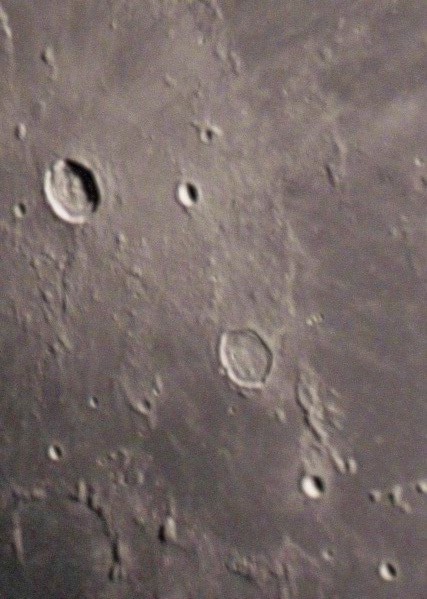Planetary bodies are so bright that long exposures are not needed to gather enough light to see them. However, even over a few seconds, turbulence in the atmosphere can blur such images quite severely. Because of this, a different technique called 'lucky imaging' is used. This involves recording a video of what is seen through the telescope, with each short frame of the video acting as a separate image. Over the course a few minutes, many thousands of such frames can be recorded and the odds are that at least some of these will be minimally affected (hence the term 'lucky' imaging). Processing software then selects the clearest of all the recorded frames and these are then stacked together and processed to bring out the desired features
Click on the thumbnails below and scroll down to see larger versions of the final images that were created from our lucky imaging sessions. (All students in the class collaborated in recording the videos from which these images were created. Individual attributions refer only to post-processing.)
Instructor note: In this session we recorded several movies of different areas of the Moon, and also some movies of Saturn. However, everyone chose to work on different areas of the lunar surface to see what features they could bring out. We had hoped to get some images of Venus also, but by the time we were ready to record our movies it had got so low in the sky that the atmospheric distortion was too severe to give anything reasonable.

Montes Riphaeus
(Austin Niec)

Craters and a fault line in the Mare Nubium
(Emily Vaughn)

Kepler and Enke craters
(Emma Krebs)
© Copyright © 2024.Tennessee Tech all rights reserved